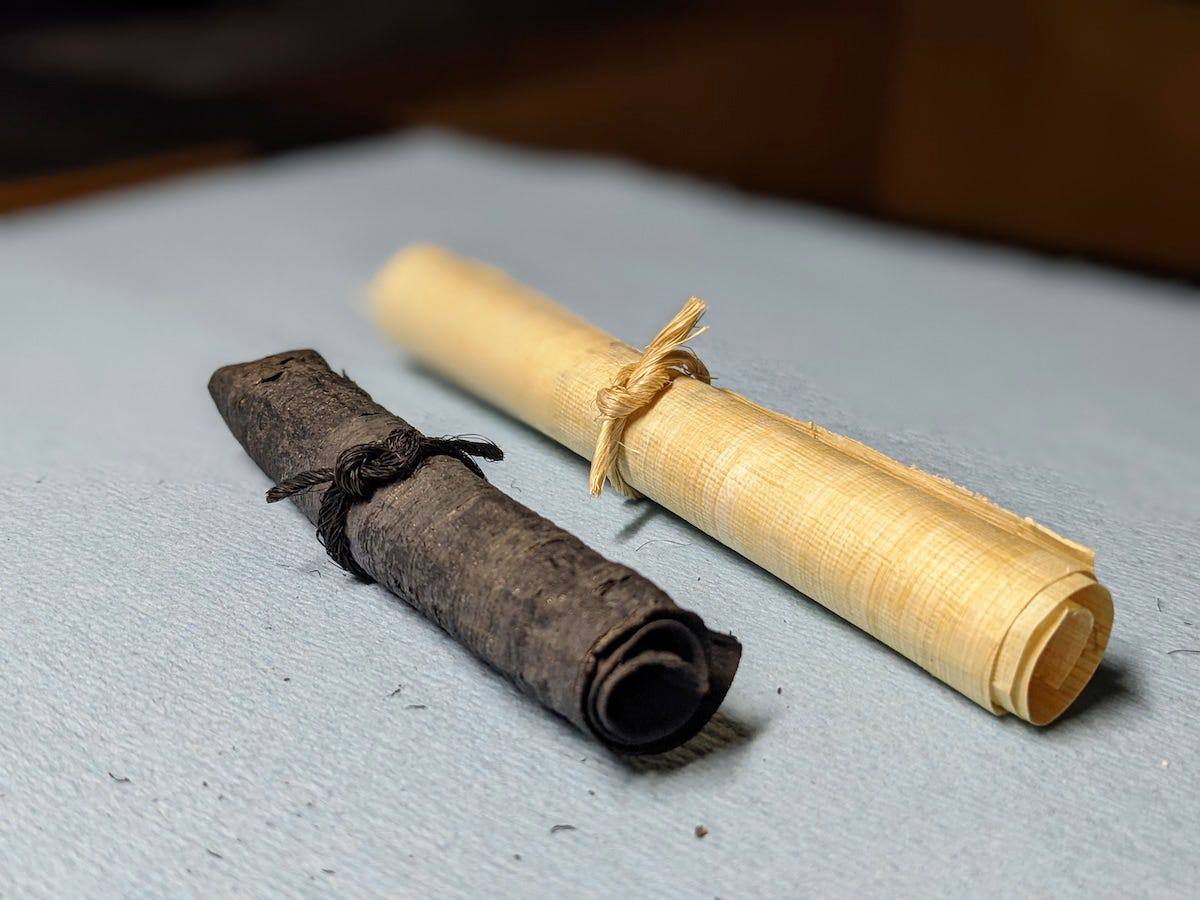Dozens of Ancient Herculaneum Scrolls on Brink of Being Revealed in Landmark Project
Source: GreekReporter.com

A rare set of 18 ancient scrolls from the ruins of Herculaneum, preserved for nearly two thousand years by volcanic ash, has arrived in the United Kingdom as part of an ambitious international effort to read texts long thought lost to history using AI.
The scrolls were flown by private jet from the Vittorio Emanuele III National Library in Naples and delivered to the Diamond Light Source facility near Oxford on March 27. There, researchers used high-powered X-rays to peer inside the tightly wound scrolls without unrolling them, hoping to uncover hidden writings buried by the eruption of Mount Vesuvius in A.D. 79.
This marks a significant step forward in the ongoing Vesuvius Challenge, a global project launched in 2023 by University of Kentucky computer scientist Brent Seales and tech entrepreneur Nat Friedman. The challenge encourages the development of new technologies to read ancient scrolls using 3D imaging and artificial intelligence.
Preserved knowledge from a buried Roman library
More than 1,800 papyri were discovered in the 18th century in a Roman villa near Naples. Early attempts to open them either damaged or destroyed the valuable artifacts. However, hundreds remain intact, and scholars believe they may contain works by ancient Greek and Roman philosophers never seen before.
“Everything we find is a surprise,” said Federica Nicolardi, a papyrologist from the University of Naples Federico II. Nicolardi selected the scrolls for this project phase and accompanied them to the UK.
Experts are deciphering yet another scroll by philosopher Philodemus from the eruption of #Vesuvius on 24 Oct 79 AD. Artificial intelligence & X-ray tomography offer hope for those hopelessly charred papyrus scrolls found at #Herculaneum‘s #VilladeiPapiri. They unroll their… pic.twitter.com/jttkk6xso3
— Antinous the Gay God (@antinousgaygod) March 24, 2025
Last year, the project gained international attention after a student-led team used artificial intelligence to decipher words from one scroll. The passage, written in Greek, discussed music and pleasure and may have been authored by the philosopher Philodemus. The team won a $700,000 prize for the breakthrough.
New scans aim to expand and accelerate discoveries
Until recently, only a handful of scrolls had been scanned at high resolution. The latest shipment includes scrolls in different shapes—some flattened, others compressed like springs—selected to test how machine learning models handle varied forms of distortion.
To protect the fragile materials during transit, researchers in Naples used 3D mapping to create custom travel cases. “It’s like papier mâché made out of glass,” says Seales. “If you dropped it, it would probably shatter.”
At Diamond, the scrolls were scanned using a powerful X-ray beam to produce images at a resolution of 8 micrometres. On screens in the control room, the interior of each scroll appeared as a glowing spiral of delicate fibers.
The scans are reconstructed into 3D models and digitally “unrolled” into flat images. This process, once done manually over months, is now being automated. One recent breakthrough came from adapting brain imaging software to detect the papyrus fibers, making it easier to separate tightly packed layers.
“We’re seeing better and better results every week,” said Friedman, adding that the ultimate goal is to scan and read all ancient Herculaneum scrolls using AI and X-ray.
The original article: belongs to GreekReporter.com .
